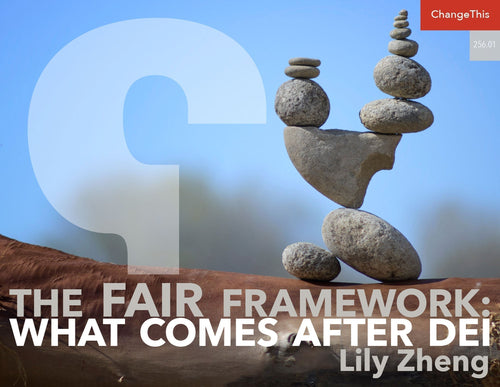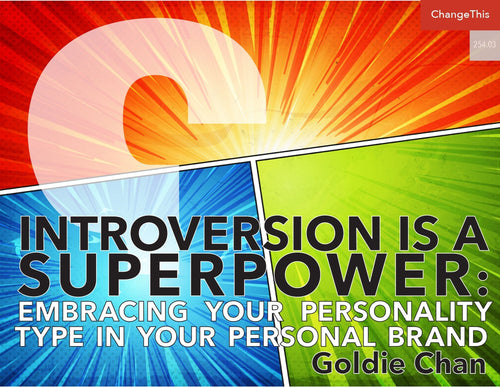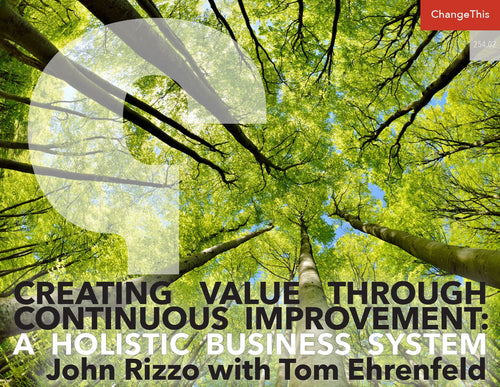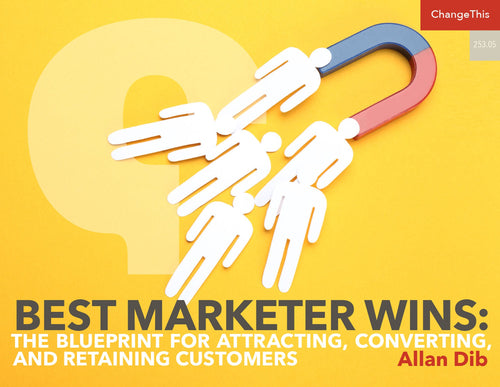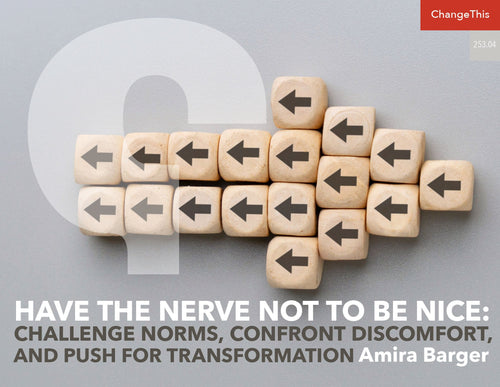Erasing Institutional Bias: Structural Change, Starting with You
Many organizational leaders long to talk about diversity and inclusion,
and want to make diverse hires and bring more people into the room. But institutionalized biases have put true equity—the breaking up of the dominance of one culture and the creation of space for those who have been underrepresented— out of reach for those who are working towards creating more just workspaces. In our work with organizations, we have found that erasing institutional bias is a difficult task. When bias is operating at a systems level, it can seem impossible to change. But with humility, patience, and some tools, change is possible.
Working against institutional bias, as we will explain, involves more than just increasing simple numbers. It includes the hard and often vulnerable work of making room at the table, on the board, and in the c-suite for those who have not historically been represented. It requires undoing our cultural assumptions about what bias is and how it works, and then giving ourselves over to the introspective and collective work of erasing institutional bias. It’s about doing this all in our everyday workspaces.
Institutional bias—simply put—is observable when bias acts on groups of people, as a social force, to organize those groups of people and unevenly distribute power among them.
Let’s look at racism as an powerful example of institutional bias. In 2016, New York Times reporter Greg Howard wrote a powerful brief explaining how we are culturally socialized to see only individualized racism as an issue. If we aren’t “being racist,” then things should be fine, right? Howard’s account explained that our current understanding of racism—the one that situates racism most prominently in the individual human heart rather than in institutional practices and policies like gerrymandering, racial profiling, educational systems, or the drug war—came about during the civil-rights era and was actually exemplified by George Wallace of Alabama. Wallace, in trying to differentiate between a racist and a segregationist said that, “A racist is one who despises someone because of his color, and an Alabama segregationist is one who conscientiously believes that it is in the best interest of the Negro and white to have separate educational and separate order.” That is to say, racism is the distinct act of individual people with hate in their hearts, but the segregationist just believes that these separate systems make things better for everyone involved.
Why is this story about George Wallace relevant to the work of institutional bias today? Well, we share this story to illustrate the reality that for decades, white Americans have been prone to characterize racism as an individual problem that other people have—we do this with virtually all our moments of bias! However, the perpetuation of racial inequality has always been supported most heavily by policies, institutions, and systems. For example, let’s look at the racial wealth gap. In 2018, the median white household will own around 86 times more wealth than the median black household and around 68 times more wealth than the median latino household. These gaps are not because of the usually-cited suspects—educational opportunities and so on—but rather are rooted in historically racist policies that established institutional biases. The Federal Housing Administration, birthed during the New Deal in the 1930’s, gave white families a significant, and virtually exclusive, head start in accumulating wealth. The FHA assigned over 98% of its home loans to white families and purposefully excluded nonwhite families from the economic opportunity of home ownership. As a result of this institutional bias, wealth in white communities was compounded and passed to future generations.
Even after these policies were changed, the lack of wealth was still present and communities were still separated by race, and the economics were further exacerbated by a racially skewed justice system and tax codes that favored the wealthy.
In his earlier political career, George Wallace worked to publicly distinguish himself from a true racist by explaining true racism as a problem of intention and heart—a problem he declared he simply did not have. He was interested in systems and a racially segregated one appeared to be the most logical to him and his constituents. Interestingly for our example of George Wallace, however, the first Prime Minister and President of Ghana, Kwame Nkrumah once posited that it is, in fact, racist policies that actually create racist ideas—not necessarily the other way around.
Gender bias rears its head in ways that reflect the same common misunderstandings that plague our cultural perceptions about racial bias. We are conditioned to believe that gender bias is a matter of ill individual intent towards gender minorities, characterized most horrifically by those who commit sexual harassment and assault. While there is still a great deal of important work to be done to address gender based violence, the equitable treatment and support of gender minorities in the workplace goes beyond the elimination of obvious bad behaviors.
There are many ways that forms of benevolent sexism can exist and act to impact structures in the workplace. While these forms of speaking appear on the surface to praise and treasure gender minorities, they are as undermining and damaging to the success and support of gender minorities as more obviously malevolent sexism. Benevolent sexism can feel like a favorable attitude towards women but still depends on sexist views of women insofar as women are seen in restricted roles. These feelings are subjectively positive in feeling tone (for the perceiver) and also tend to elicit behaviors typically categorized as prosocial (such as helping) or intimacy seeking: “Women are so much better at being compassionate,” or “This office is a mess—you can tell we have too many men in one place.”
These seem like relatively benign comments, but they actually have a prolonged and damaging structural impact on women in the workplace. Benevolent sexism does particular damage by supporting environments that cater to patronizing discrimination—it often looks like polite help and sympathy but is perversely undermining. Additional research findings published by researchers at Harvard revealed that in workplaces where benevolent sexism was present, female employees received less criticism than their male counterparts. Obviously, this was not problematic in and of itself. What was problematic about this trend was that female workers were given less challenging developmental assignments; the study was replicated and the results were the same with thousands of managers. The combination of skewed feedback with less challenging assignments led researchers to conclude that the managers were treating their female employees with kid gloves. The female employees were unable to advance at the same rate as their male peers. This manner of treatment continues to permeate workplaces with the notion that female workers are less capable than their male counterparts.
If we continue to think of biases as the activity of only isolated, terrible, bad people, then the systems as a whole (the systems that are causing racialized outcomes, such as education, criminal justice, health, and economic systems) don’t need to be reimagined. Only individuals need to be reformed. The systems that prop up oppression remain in place and we are stuck believing that institutional bias is a thing of the past, something that ended publicly with the introduction of civil rights or the right to vote or the death of Jim Crow. In our workspaces, we believe that institutional bias isn’t present because we see what appears to be a diverse workplace, but the inequitable structure is allowed to continue to prevent the development of cultures of difference.
One of the most crippling organizational issues that we come across in our work to erase institutional bias happens this way: when leaders miss this particular mark on institutional bias. A leader believes that he or she has good intentions and is unable or unwilling to look at her or his own behaviors. It then translates into overconfidence in their ability to work across demographics and results in a reduced capacity to truly achieve equity and inclusion in an organization.
This is not an uncommon phenomenon. Many organizational leaders we work with overestimate their own abilities to interact across demographic differences and then underestimate their colleagues’ ability to do the same. Rarely do people see themselves as part of the problem. Even when a problem with institutional bias is evident to people across the organization, it is a rare institution that is populated with individuals willing or able to accept their role in the creation and maintenance of biased systems. People tend to believe that everyone else is the problem, that the need for reform lies outside of themselves and just in other individuals who need a change of heart.
In fact, our experience has been confirmed by data recently released in research published by leadership consulting firm Zenger/Folkman in Harvard Business Review. In analyzing ten years of data feedback of over 1.5 million raters describing 122,000 leaders, the firm found that the higher a leader rates him or herself on valuing diversity and practicing inclusion, the more likely those leaders are to overrate their effectiveness. Additionally, those who are rated the best by their employees don’t realize their skill and capability. Harvard’s conclusion? “While a person’s effectiveness with any skill always needs to be based on the evaluations of others, rather than self-perception, it seems especially true in this case. You might intend to be inclusive, and even think you are inclusive, but your impact on others might be very different.” In other words, when you read bias as an individual problem that you don’t have rather than a systemic issue that requires collaborative work to dismantle, you become part of the problem instead of an ally for change. More importantly, this kind of thinking leaves intact the truest institutional obstacles that perpetuate inequality and injustice.
What can you do? We’ve seen and heard countless calls to civic engagement in order to confront institutional bias over the past several months. Organize! Vote! Knock on doors and protest! In response to those calls, we’ve heard, usually whispered like they are in a confessional, clients and friends say that activism and revolution can feel far off from their everyday work lives, yet their workspaces are where they long to see the most change. This longing is why we believe strongly that erasing institutional bias can and should happen on the ground, in our everyday lives. The real revolutionary activism of confronting institutional bias is not as far off as it may seem. To borrow from the liberation movements of the 1960’s and 1970’s, the personal is political.
We can take action, in small ways, every day, to combat these biases that divide us. The biases we all harbor affect the communities of people we are with, the organizations we work in, and ultimately the systems of power we are all part of. When these biases go unchecked, they become institutionalized and are perpetuated, often without us even knowing it. How and where we work, who we hire, where we shop and who we eat with, even what words we use in describing ourselves and others can either support institutional bias or protest against it.
In our work, we always begin with stories—the stories of individuals who have courageously confronted institutional bias. It is from this place—the place of the story—that we stand to make progress in offering organizational tools for mapping a way forward when you find yourself facing institutional bias. We start with these stories to show what people have done in response to institutional bias, even when things can feel overwhelming. For example, in the observable and salient debacle of the hearings, our silence about our experiences of bias actually supports institutional bias. But when we speak up—when we use our stories as a starting place—a movement begins. As our country has grown more outraged about police violence against unarmed black men, it has been largely through the power of social media and stories.
When we work to erase institutional bias in organizations, we utilize two frameworks in response to these stories. The first framework focuses on the work you must personally do before examining institutional bias challenges: evaluate your old role and define your new one as you approach biases, cultivate allies, and create a movement. The second framework organizes steps for the actual work of addressing bias within larger systems: set a clear intention, lead with data (which includes stories!), diagnose accurately, deconstruct past behaviors, reconstruct to eliminate problematic behaviors, and build in means for accountability and ongoing measurement.
These frameworks include specific tools that you can use in your own organization, such as personal and group reflection exercises and interventions for use when bias rears its head. We always implement these practices in the context of stories, though, because this reveals real moments when real people faced actual challenges—and many found some degree of success in changing the culture around them.
In one instance, the female CEO of a software firm wanted to cultivate a more equitable workplace and now maintains a 60% female leadership structure. When she was writing her first job description, she noticed that only men were applying. She told us that, “When I started to dig into why, I realized I was playing into institutional bias in the way I wrote the job description. I actively sought feedback and was able to significantly change the ratio of women on our team.”
While her intention was to open the hiring opportunity to all, she realized, upon investigation, that her language and behavior in formulating the job description defaulted to cultural norms in her industry. While the desire to hire women was there, the language used to communicate company needs was inadvertently male centric.
This CEO walked through our steps for change—following our first framework, she began by evaluating her own role and then determined a new pro-active role by learning how to rewrite the job description to be more female/parent-centric. She intentionally cultivated allies from within her organization by sharing the information she gathered and then created a movement by writing about her experience—sharing her story—and giving keynotes at various conferences and events. She followed our second framework and worked to erase the institutional bias by setting a clear intention to increase the number of women applying and being hired by her company, and then led with clear data. She diagnosed the problem accurately and worked to deconstruct and reconstruct by removing all male-centric language and rewriting the job description to be more inclusive. She then built in accountability and measurement by committing to maintain a 60% female leadership structure.
Her story encourages us that doing the work matters and can effect change, but not all of the stories we hear have happy endings. In these moments it’s all the more critical to confront and support one another when we tell our truth. In one story, a black female executive encountered bias in a company where all the office receptionists and accountants were minority women while the personal assistants were white women. Her task was to improve fractured employee relations and she faced heartbreaking discouragement from leadership. In another story, a female university professor faced pushback when she raised concerns about low retention rates at her school for students of color; she was ultimately labeled as “unprofessional” and left the institution.
Though these stories ended with unfavorable outcomes, they are important teachers in our journey towards more equitable workplaces. Telling stories—both when things work and when things don’t—reminds us that the work of erasing institutional bias isn’t easy, nor is it finished. Telling these stories helps us create and maintain a collective consciousness of a world with biases that still need to be erased. Telling these stories helps us remain sensitive to the presence and humanity of others—and is of particular importance when the culture conditions us to be insensitive and dehumanize anyone who does not look, sound, or think like us.
We included all of these personal stories of facing bias—of being shamed, harmed, and subject to various forms of oppression—as we work to develop more equitable workplaces. We tell both the stories with positive outcomes and the stories that leave us grieving because the stories that we tell shape the world around us. When we share our stories, together, we create a chorus of resistance and become better supporters to one another.
In an op-ed for the New York Times published at the height of the Ford-Kavanaugh controversy, Jennifer Weiner wrote, “Stories matter tremendously. They’re how we learn about who is real and who’s less consequential; whose pain is important and whose, not so much; who is the hero and who is merely the hero’s reward.” We look inward, we do the difficult work, and we tell stories—both of what we have suffered and of the work we have done—to give one another a way forward, and to remind one another that our work, our pain, our struggle, our lives matter to the work of erasing institutional bias. It is up to each of us to take up a cause we can connect with and make change happen where we live and work.


